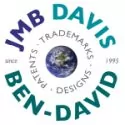Your patent has been granted in the US (for example) and you look at all the corresponding applications that you have just filed in other countries. And you think to yourself "if only there was a way that I could convince the Examiners in these other countries just to accept the results of the US Examiner. Think of the time and money that would save."
Fortunately, in Israel it is not only possible, but in accordance with Section 17(c) of the Patent Law, there is a procedure for doing so; if a request for what has become known as "Modified Examination" (ME) is accepted, the same claims as in the corresponding patent will be deemed to have satisfied the requirements for novelty and inventive step under Israel Law.
However, not all requests are accepted. This is not a 'rubber stamp' process. In fact, the opposite is true, as each such request is reviewed by the Examiner so as to check whether the original examination was sufficiently rigorous and whether additional prior art may exist. Only if the Israeli Examiner concludes that the original examination was, indeed, rigorous, and that no additional prior art exists, will the request for modified examination be accepted.
However, we're jumping the gun. Let's see how it's done, what's included and what's not.
What is actually being requested? A request for ME is essentially asking the Israel Patent Office to rely on the examination of a 'corresponding' foreign patent application in relation to certain grounds, primarily novelty and inventive step.
Note that for an application to be considered 'corresponding' or 'parallel', the content of that application must be for the same invention as claimed in the Israel application and owned by the same applicant. Additionally, there must be a priority claim in accordance with one of the following scenarios (Section 17(c)(1)):
- The Israel application claims priority to the patent application forming the basis for the request (the "parallel application"); the Israel application was filed within 12 month of the priority application filing date and the priority request was filed in the Israel Patent office within 2 months of filing the Israel application.
- The parallel application claims priority to the Israel application based on the Laws of that county.
- The Israel application and a parallel application both claim priority to a different application.
At what stage of the application process can ME be requested? A request for ME can be submitted with the response to the Notice Prior to Examination, in response to an Office Action, or at any point up until allowance of the application.
What is the immediate benefit of acceptance? If a request for ME is accepted, as mentioned above, it will automatically resolve the issues of novelty and inventive step (Sections 4 and 5 of the Law).
Are there issues that cannot be resolved through ME? Yes. Additional issues for which there is no generally accepted standard internationally will still need to be resolved. The most common issues of this sort include the presence of multiple inventions (restriction), )Section 8 of the Israel Patent Law), and the presence of a method of therapeutic treatment of the human body (Section 7 of the Israel Patent Law).
What will happen if the request is accepted and there are no 'Additional' issues as above? If no other issues need to be dealt with, other than having to deal with some minor pre-allowance formalities, the application will likely proceed directly to allowance.
What's the likelihood of acceptance of a request for ME? Most requests for ME are accepted. Generally speaking, for technology inventions, ranging, inter alia, from mechanical inventions to telecom to medical devices, 80-90% of such requests are accepted. However, in the life sciences this drops to about 70 %.
How does an application qualify for requesting ME, and how similar must the claims be to those in the granted patent? A request for ME may be based on an issued patent to which the Israel application either claims priority, or shares therewith a common priority claim.
The claims in the Israel application must be amended to be identical to those of the issued patent, with the exception that claims can be removed and renumbered accordingly.
The claims cannot, however, be amended in order to comply with Israel Patent Law 'format' requirements (e.g. by amending a "method of human treatment" claim to a "composition of use" claim) . However, as above, non-compliant claims can be removed.
Isn't this similar to a request for examination under the Patent Prosecution Highway?
As I mentioned in a previous article, a PPH merely accelerates examination. Combining both a PPH request and an ME request gives the Examiner an opportunity to rely on an examination that has already been performed in a different jurisdiction, and ensures that the application will come up for examination quickly. Accordingly, when possible, in terms of both time and cost, the most efficient path will in many cases be to request examination under both PPH and Section 17(c).
The content of this article is intended to provide a general guide to the subject matter. Specialist advice should be sought about your specific circumstances.

